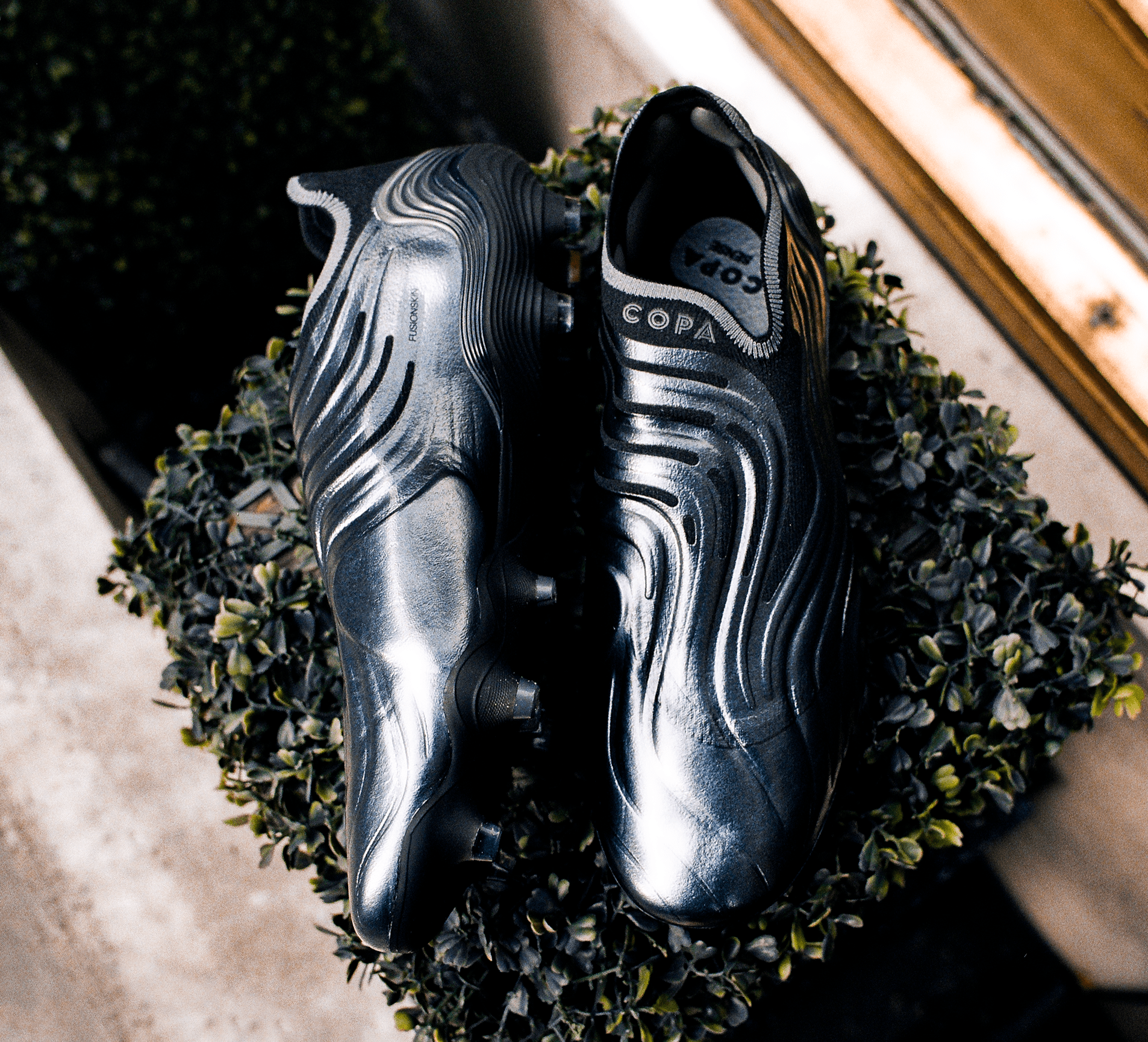Ever since the first synthetic uppers were introduced at the start of the millenia, the fight between leather and synthetic made football boots has been waged by all brands and by all athletes. In this blog we will break down the differences between both materials, as well as the advantages and disadvantages of each.
The Copa Mundial currently is the leading symbol for classic leather boots worldwide.
 Leather
Leather
Since leather was the first material used, we will by respect begin with it. Coming from the treatment and tanning of animal skin & hide, leather remains a natural product coming from a living organism. This in turn allows it to offer properties that remain difficult to duplicate and replicate. Leather is a material that will, with time, stretch from the result of heat. In this scenario, heat derives from the foot and it’s perspiration and movements during use of the footwear. This natural stretch benefits athletes as the material will shape itself to the natural form of one’s foot, creating a fit unique to their own physique. Leather can come from various animals, can be treated in various ways and be formed into different thicknesses. The two dominant types of leather in this sport come from cows & kangaroos, with kangaroos being on the luxury end of the spectrum. Depending on their treatment however, the quality can easily be on par between both animals. In terms of touch on the ball and feel on foot, leather offers a more padded and naturally softer sensation.
Because it is a natural product, leather does require some more maintenance and does have some disadvantages. With time, it is quite normal for the leather to absorb moisture, then dry and harden. This can cause cracking of the outside layer, and can be avoided using leather balm. This balm can be found in most footwear specialty stores or online, it helps hydrate the leather and keep it soft over long periods. Unfortunately for most, this sport isn’t always played in dry conditions. As mentioned, leather absorbs moisture and when it rains, the leather will naturally become wet and heavy. This isn’t performance hindering, but can be an annoyance for some athletes. Ensuring the leather dries before it’s next use is critical in maintaining its quality. A final long-term issue can be the overstretching of the leather. Some brands may neglect any supporting material and with long use, a very soft leather can over stretch and have little amounts of structure. This can be adjusted with tying the laces tighter but again, may be an annoyance for some.

Synthetic
The Nike Mercurial remains the face of thin synthetic footwear as it was one of the first to start using it as a material in the early 2000s.
Now let’s talk about synthetic materials. A synthetic upper material is any sort of product that is created and manufactured by man, whether it’s a plastic or a knitted material. This material, much like many that are man-made, are designed to be less expensive, lighter and thinner, and overall easier to maintain in the long-run. There are many forms of synthetics, from thin and plasticy all the way to thick and padded. The type of synthetic will depend on what the manufacturer wants it designed for. The recent trend since 2014 has been knitted synthetics coated with protecting layers to offer a very sock-like feel while keeping the exposed knit covered and protected from wear. Synthetics in general are not designed to stretch like leather would, some elasticated synthetics (like knit) may stretch with force but then return to its initial shape afterwards. On the ball and on foot, synthetics can vary depending on the build. A thinner knit will feel soft on foot but barefoot and close to the ball, whereas a padded synthetic will feel more comfortable and leather-like.
Synthetic being a man-made material means it offers properties that leather would not. It very rarely stretches or forms to the shape of a foot, and may be less comfortable at the start of wear. However many synthetics do not absorb moisture and remain lighter when playing in wet conditions. This also applies to maintenance and durability, since water does not penetrate the actual synthetic, it generally is easier to clean and does not need to be treated with any balm during long-term use.

To wrap up, the current market is a mix of many materials. From knits, to thick kangaroo leather, and sometimes combinations of both! An example is the new Copa Sense.1 from Adidas , which offers a padded synthetic midfoot and a kangaroo leather forefoot for a hybrid offering of both materials.
Preferences are different from person to person, and each shoe and it’s upper offer different experiences and properties.
